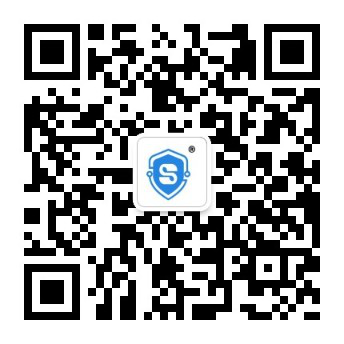深圳独立第三方市场公司上书房信息咨询开展行业研究
本文由上书房信息咨询(深圳第三方咨询公司)出品,欢迎转载,请注明出处。中国独立第三方调研机构南宁市场调查公司上书房信息咨询与深圳、广州、珠海、惠州等各个地区的政府及下属单位均有长期的合作,涉及城市环境、文明、政府政策、安全指标等各项调研,调研方面多样,调研手段丰富,通过对不同城市的调研,建立完善了一系列评估体系,并实用于各个调研中。
行业研究涉及多种方法和技术,以下是一些常用的行业研究方法:
1、文献研究:通过查阅行业相关的学术论文、行业报告、市场调研报告和专业出版物等文献资料,获取关于行业发展趋势、技术创新和市场动态的信息。
2、数据分析:收集和分析行业相关的数据,如市场数据、销售数据、生产数据和财务数据等。利用统计分析和数据建模的方法,揭示数据中的模式、趋势和关联性,以获得深入的行业洞察。
3、市场调研:进行定量或定性的市场调研,通过问卷调查、深入访谈、焦点小组讨论等方式,收集目标市场的需求、偏好、行为和态度等信息。市场调研可以帮助了解市场规模、竞争情况、消费者洞察和产品定位等方面。
4、竞争分析:研究竞争对手的市场地位、产品组合、定价策略、销售渠道、市场份额和品牌声誉等信息。竞争分析可以揭示竞争对手的优势和劣势,并为制定竞争策略提供依据。
5、技术研究:关注行业内的技术创新、研发活动和专利信息。通过追踪技术趋势、参与学术会议、与研发机构合作等方式,获取关于行业技术前沿和创新方向的信息。
6、参观考察:实地参观行业企业、生产基地、研发中心或展览会等,观察生产过程、产品展示和行业趋势等。参观考察可以提供直观的行业观察和实地经验,加深对行业现状和发展的理解。
7、行业专家咨询:与行业内的专家、从业者或顾问进行交流和咨询,获取他们的意见、见解和专业知识。专家咨询可以提供深入的行业洞察和经验分享,帮助理解行业的关键问题和挑战。
8、SWOT分析:进行SWOT(优势、劣势、机会和威胁)分析,评估行业的竞争力和可持续发展的潜力。SWOT分析有助于识别行业的优势、劣势、市场机会和潜在威胁。

这些研究方法可以单独或结合使用,以收集关于行业的全面信息和洞察,实现明智的决策和战略规划。
深圳第三方的市场调查公司上书房信息咨询在2022年服务客户超过100家,包含了写字楼、产业园区、住宅、上海第三方满意度测评、景区满意度调查、满意度调查问卷、深圳公众民意调研、消费者满意度研究、深圳地铁广告效果评估、开展购物满意度调查、开展购物市场调查、满意度调查报告、第三方评估市场调查公司、第三方评估市场调研、第三方评估市场调研机构、成都市场调查、上海小区业主满意度调查等多种类型,调查项目覆盖了国内160余个城市,通过电话调查、网络问卷、现场访问、深度访谈、焦点小组等方式调研有效样本超5,000,000个。
Industry research methods
Industry research involves various methods and techniques. Here are some commonly used industry research methods:
1、Desk Research: Conducting extensive literature reviews and analyzing existing industry reports, market research studies, industry publications, and academic papers to gather information on industry trends, technological advancements, and market dynamics.
2、Data Analysis: Collecting and analyzing industry-related data such as market data, sales data, production data, and financial data. Statistical analysis and data modeling techniques are applied to uncover patterns, trends, and correlations within the data, providing in-depth industry insights.
3、Market Surveys: Conducting quantitative or qualitative market surveys to collect information on market demand, preferences, behaviors, and attitudes. Methods such as questionnaires, interviews, and focus group discussions are employed to gather insights into market size, competition, consumer preferences, and product positioning.
4、Competitive Analysis: Studying competitors' market positions, product portfolios, pricing strategies, distribution channels, market share, and brand reputation. Competitive analysis helps identify competitors' strengths and weaknesses, enabling the formulation of effective competitive strategies.
5、Technological Research: Monitoring technological advancements, research activities, and patent information within the industry. Tracking technology trends, participating in academic conferences, and collaborating with research institutions provide insights into industry innovations and emerging technologies.
6、Site Visits: Visiting industry companies, production facilities, research centers, or trade shows to observe production processes, product displays, and industry trends. Site visits provide firsthand industry observations and experiences, deepening understanding of the industry's current status and development.
7、Industry Expert Consultation: Consulting and exchanging insights with industry experts, practitioners, or consultants to gain their opinions, expertise, and industry knowledge. Expert consultations provide valuable industry insights and knowledge sharing, helping understand key industry issues and challenges.
8、SWOT Analysis: Conducting a SWOT (Strengths, Weaknesses, Opportunities, and Threats) analysis to assess the industry's competitiveness and potential for sustainable development. SWOT analysis helps identify industry strengths, weaknesses, market opportunities, and potential threats.
These research methods can be used individually or in combination to gather comprehensive information and insights about the industry, enabling informed decision-making and strategic planning.





